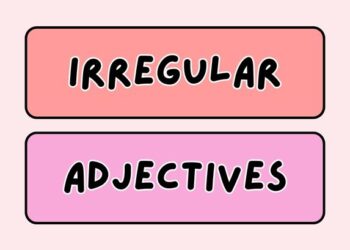Learning French nouns isn’t always easy. All nouns in French have a gender – they are either masculine or feminine. This is different than in English! How can you tell if a French noun is masculine or feminine when you see it for the first time?
The good news is that there are some hints you can look for. Certain endings can give you clues about whether a noun is masculine or feminine.
This article will explain several useful tips and tricks for figuring out if unfamiliar French nouns are masculine or feminine. We’ll learn some common patterns to watch for with noun endings. We’ll also see how articles, adjectives, and context around the noun can help provide hints. With practice, this tricky concept will make more sense!

Table of Contents
Toggle1. What are some general tips for determining if a French noun is masculine or feminine?
French nouns are either masculine or feminine, and there are some general guidelines you can follow to determine the gender of a noun:
- Nouns ending in -e tend to be feminine, like fille (girl) or table (table). However, some -e nouns are masculine, so you need to check a dictionary.
- Nouns ending in a consonant tend to be masculine, like garçon (boy) or ballon (ball).
- Nouns for professions ending in -eur tend to be masculine, like professeur (teacher). Some exceptions are feminine forms like chanteuse (female singer).
- Nouns ending in -té or -ion are usually feminine, like liberté (freedom) and maison (house).
- Nouns ending in -age or -ment are often masculine, like fromage (cheese) and appartement (apartment).
- Nouns for days, months, seasons, and languages are masculine, like lundi (Monday), mars (March), printemps (spring), and français (French).
Some nouns can only be learned through usage, but these general rules can guide you in the right direction as you learn vocabulary. With practice, identifying noun gender will become second nature!
2. How can you tell if a French noun ending in “e” is masculine or feminine?
Many French nouns ending in “-e” can be tricky to identify as masculine or feminine. Here are some tips:
- Check a dictionary if you are unsure. Dictionaries will indicate a noun’s gender.
- Nouns describing people are often feminine if they end in “-e”, like chanteuse (female singer) or infirmière (nurse).
- Nouns describing male roles/jobs usually take a masculine article even if they end in “-e”, like le juge (the judge) or le cuisinier (the cook).
- Nouns ending in -ème and -ôme are masculine, like problème (problem) and atome (atom).
- Nouns ending in -age, -asse, -aume, -ème, -olle, -oule tend to be feminine, like plage (beach), mollesse (softness), royaume (kingdom), cathédrale (cathedral), libellule (dragonfly), formule (formula).
- Memorize common noun genders, like la table (the table, feminine) or le musée (the museum, masculine).
- Plural nouns keep the same gender as the singular, so memorize singular forms.
With practice, context clues, and dictionary checks, the gender of French “-e” nouns will become easier. Listen and read a lot to get used to patterns.
3. What are some exceptions to the rules for determining noun gender in French?
While there are some general rules for determining noun gender in French, there are always exceptions:
- Some nouns ending in -e are masculine, like le musée (museum), le lycée (high school), and le gorille (gorilla).
- A few nouns ending in a consonant are feminine, such as la mer (the sea), la tour (tower), and la main (hand).
- Some nouns for professions ending in -eur are feminine, like la chanteuse (female singer) and l’infirmière (nurse).
- Words ending in -iste can be either masculine or feminine depending on their meaning, like le dentiste (male dentist) vs. la dentiste (female dentist).
- Nouns ending in -eur that denote things/concepts are often feminine, like la douleur (pain) and la couleur (color).
- Some words adopted from other languages don’t follow French gender patterns, like le weekend (masculine) and la pizza (feminine).
- Nouns for countries, regions, and cities do not consistently follow a gender pattern.
The best way to learn irregular noun genders is through exposure and practice. Make flashcards, read, listen to native speakers, and use nouns in context. Check a dictionary whenever gender is unclear.
4. How can you determine if a plural French noun is masculine or feminine?
For plural French nouns, the gender stays the same in the plural form as it was in the singular:
- If a singular noun was masculine, the plural form remains masculine. For example, le garçon (boy) becomes les garçons in plural.
- If a singular noun was feminine, the plural remains feminine. For instance, la fille (girl) becomes les filles in plural.
Here are some tips for identifying plural noun gender:
- Look at the singular form of the noun, or try to find its singular meaning from context clues.
- Pay attention to articles and adjectives – their form will indicate the noun’s gender. Les is the masculine plural article while les is the feminine plural article.
- Nouns describing male persons are masculine plural, like les étudiants (male students). Nouns describing female persons are feminine plural, like les étudiantes (female students).
- Nouns ending in -eau and -ou that were masculine in the singular remain masculine in the plural, like les bateaux (boats) from le bateau.
- Memorize irregular plural nouns like les amis (masculine, friends) and les amies (feminine, girlfriends).
With practice identifying singular noun genders, the plural forms will become easier over time. Pay close attention to articles and adjectives for clues.
5. What are some common categories of nouns that tend to all be masculine or feminine?
There are some general noun categories in French that tend to share the same gender:
Common Masculine Categories:
- Days of the week (lundi, mardi, etc.)
- Months (janvier, février, etc.)
- Seasons (printemps, été, etc.)
- Languages (français, anglais, etc.)
- Numbers (un, deux, trois, etc.)
Common Feminine Categories:
- Parts of the body (la main, la tête, etc.)
- Fruits (la pomme, la poire, etc.)
- Trees (le chêne, le sapin, etc.)
- Flowers (la rose, la tulipe, etc.)
- Stones and metals (l’or, le diamant, etc.)
Of course, there are always some exceptions within categories, so it’s still important to memorize each noun with its gender. But being aware of these common patterns can aid memorization.
6. What are some tips for memorizing the gender of nouns in French?
Here are some effective strategies for memorizing the gender of French nouns:
- Whenever you learn a new noun, make a flashcard with the definite article (le/la) and repeat it out loud.
- Group nouns categorically and learn the patterns (e.g. days are masculine, metals are feminine).
- Learn noun phrases like “la cuisine française” instead of individual words.
- Use new nouns in sentences to reinforce the article and context.
- Associate a masculine noun with a male character or name (le chien de Jean).
- Associate a feminine noun with a female character/name (la voiture de Marie).
- For irregular nouns, create a phrase or mental image connecting the noun to its gender (le soleil is masculine like the sun god Apollo).
- Study noun genders by the patterns in songs, poems, dialogues, and stories.
- Play games like guessing the noun’s gender from its spelling or testing yourself with flashcards.
- Accept that memorization takes time and repetition – be patient with yourself!
7. What strategies can you use to determine an unfamiliar French noun’s gender?
When you encounter a French noun for the first time, there are some strategies you can use to make an educated guess at its gender:
- Look at the noun’s ending and any patterns or rules you know (-age is often masculine, -tion is often feminine).
- Check if it resembles any related words whose gender you already know.
- Look for context clues like surrounding articles, adjectives, or relative pronouns that might indicate gender.
- Try pairing it with both le and la to see which sounds better.
- Consider the meaning – nouns for male persons or jobs are more often masculine.
- Pluralize the noun in your mind – if an S is added, it may indicate a feminine singular form.
- Think of common suffixes like -eur or -teur and their frequent gender associations.
- Quickly look up the noun in a French dictionary if possible.
- Memorize the noun with its definite article for next time.
8. Are there any tricks for remembering whether certain noun endings are masculine or feminine?
There are some memory tricks that can help with certain noun endings in French:
- Words ending in -age or -ment are often masculine, like garage and appartement. Imagine a masculine “agent” doing the action.
- Nouns ending in -eur sounding like “air” are usually feminine, like la peur (fear). Associate them with feminine “airiness.”
- Nouns ending in -ure often denote feminine abstract concepts, like la nature (nature). Picture a feminine figure immortalizing a concept in a mural.
- Nouns ending in -ette are diminutives and generally feminine, like fourchette (fork). Picture a feminine fork with details like flowers on the handle.
- Nouns ending in -ou like le caillou (pebble) are masculine. Imagine throwing masculine rocks or pebbles.
- Countries ending in -e like le Mexique or le Zimbabwe are masculine exceptions. Picture their shapes like sturdy male torsos.
- Words ending in -ie like la voie (way) are feminine. Associate them with a feminine-sounding “eee” sound.
- Words ending in -aison like maison (house) are feminine. Link them to an English “-asion” suffix denoting feminine concepts.
Creating vivid images and associations can help cement these patterns and exceptions in your memory over time.
9. Are there any French nouns that have the same spelling but different gender?
Yes, there are some French nouns that have the same spelling but differ in gender:
- Le tour/la tour – The masculine “tour” means “tour” or “trip”, while the feminine “tour” means “tower”.
- Le mode/la mode – The masculine word refers to “fashion” or a “way” of doing something, while the feminine word means “fashion” as in clothing styles.
- Le manche/la manche – The masculine “manche” is a “handle” while the feminine means “sleeve”.
- Le voile/la voile – The masculine is a “veil” and the feminine means “sail”.
- Le poste/la poste – The masculine means a “position” or “post” while the feminine means the “postal service”.
- Le critique/la critique – The masculine is a “critique” and the feminine means “criticism”.
- Le somme/la somme – The masculine is a “nap”, while the feminine is a “sum” of money.
- Le garde/la garde – The masculine is a “guard” and the feminine means “guarding” or “custody”.
- Le livre/la livre – The masculine is a “book” and the feminine is a unit of “pound” weight.
- Le fin/la fin – The masculine means “end” and the feminine means “fine” or “thin”.
- Le page/la page – The masculine “page” is a pageboy or servant, while the feminine means a page of a book or document.
- Le statut/la statut – The masculine is a statute or status, while the feminine is a statue.
- Le bombe/la bombe – The masculine means a “bombing” while the feminine is an actual “bomb”.
- Le pendule/la pendule – The masculine is a pendulum and the feminine is a clock.
- Le satellite/la satellite – The masculine is a satellite (object) and the feminine means a “satellite town”.
- Le marche/la marche – The masculine is a market or trade, while the feminine means “marching” or a march.
- Le moule/la moule – The masculine is a mold while the feminine is the animal “mussel”.
- Le solde/la solde – The masculine means the “balance” of an account, while the feminine is a soldier’s “pay”.
- Le troupe/la troupe – The masculine is “troops” and the feminine is a troupe of performers.
- Le mémoire/la mémoire – The masculine is a “memoir” and the feminine means “memory”.
- Le borne/la borne – The masculine “borne” is a milestone or border stone, while the feminine “borne” is a terminal or socket.
- Le manoeuvre/la manoeuvre – The masculine is a “maneuver” and the feminine is manual labor.
- Le somme/la somme – The masculine means “nap” and the feminine is a “sum” of money.
- Le coutume/la coutume – The masculine refers to a “custom” and the feminine is a “costume”.
- Le aide/la aide – The masculine is “help” and the feminine is an “assistant”.
- Le ensemble/la ensemble – The masculine is an “ensemble” and the feminine is a “whole”.
- Le relais/la relais – The masculine is a “relay” and the feminine is a “connection”.
- Le compas/la compas – The masculine means “compass” and the feminine means “rhythm” or “beat”.
- Le silence/la silence – The masculine means “silence” while the feminine means “silent film”.
- Le conducting/la conducting – The masculine is “conducting” and the feminine is a “conducting” piece of music.
10. How do you determine the gender of French nouns that have the same spelling?
Here are some tips for determining the gender of French nouns that are spelled the same but have different genders:
- Look at the article (le, la) used with the noun – this will directly indicate its gender.
- Pay attention to any adjectives modifying the noun, as their spelling will reflect the noun’s gender.
- Look for context clues in the surrounding words/phrases that point to a particular meaning and thus gender.
- If it’s a noun that denotes a person, male-associated terms usually indicate a masculine noun while female terms indicate a feminine noun.
- Try mentally pairing the noun with both “le” and “la” – see which article sounds more correct based on the context.
- Pluralize the noun – sometimes the masculine and feminine plural forms differ, signaling the singular gender.
- Consider the -e ending rule – while not 100% consistent, nouns ending in -e are more often feminine.
- Recall related noun pairings where one is masculine and the other is feminine, like “auteur” (m) and “autrice” (f).
- For nouns referring to professions, the feminine often has an extra suffix like -euse or -trice.
- Consult a dictionary if still uncertain – most will note a noun’s gender.
11. What tips do native French speakers have for properly learning noun genders?
- Start by fully memorizing the article (le/la/les) with every new noun you learn.
- Pay close attention to noun endings, but don’t rely solely on them – learn exceptions too.
- Use new nouns frequently in sentences to become accustomed to their gender patterns.
- Study nouns within thematic groups when possible – it will reinforce gender associations.
- Learn noun gender alongside descriptive adjectives and pay attention to their agreements.
- Quiz yourself often using flashcards or apps – test both noun meanings and articles.
- Practice identifying the gender of noun phrases, not just individual words in isolation.
- Immerse yourself in as much comprehensible French input as possible through reading, listening, etc.
- Make a conscious effort to notice noun genders when reading or listening – don’t just gloss over them.
- Be patient and persistent – mastering gender takes conscious practice over time.
- Analyze your mistake patterns – if certain endings trip you up, focus on them.
- Say nouns out loud with the article frequently – auditory reinforcement helps.
Bonne Chance avec les Genres!
And there you have it – some helpful tips and strategies for figuring out the gender of new French nouns you come across. With time and practice using these rules of thumb, identifying noun gender will start feeling more natural.
Remember, don’t stress too much about making mistakes at first! Native French speakers sometimes have trouble with noun genders too. The key is paying attention to patterns, using clues like articles and adjective endings, and constantly exposing yourself to more French vocabulary.














